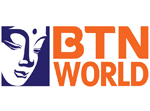And what made this trip special is that food was the main focus.
After a short lecture about the religion, Monk Sun-jae who is also an experience cook, talked about the food served in temples.
Chris Kurth, a student from Steinbeis University said, "I think I've been very fortunate to come here since this is my first trip and I think I've only been able to grasp a glimpse of the Korean culture so far. How much can you really learn in five or six days that I've been here. But I think it has sparked an interest for me."
The so-called temple food is mostly simple, bland dishes, and this is why it is more difficult to cook a tasty meal.
Monk Sun-jae demonstrated and shared a few cooking tips on how to steam rice wrapped in lotus leaves and make side dishes with tofu, mushrooms and soybean paste.
Students then got the chance to try out for themselves what they learned and taste what food served in temples is like.
"It is a little bit different because you peck these things in the lotus leaf and it tastes very different but very very good", says Nadine Brandt, a student from Steinbeis University
Sun-jae, the temple's food researcher said that he would like the students to learn and understand Korean history, culture and our people's wisdom through food.
Although most foreigners say Korean food is too spicy and has a strong odor, some find temple food less strong in flavor.
Therefore monks are boosting efforts to help familiarize foreigners with Korean culture using these dishes, which nevertheless preserves traditional cooking.
"Korean Buddhist leaders are planning to visit Paris in September to promote Buddhist traditions, where they will also introduce temple food at a festival organized jointly by UNESCO."






